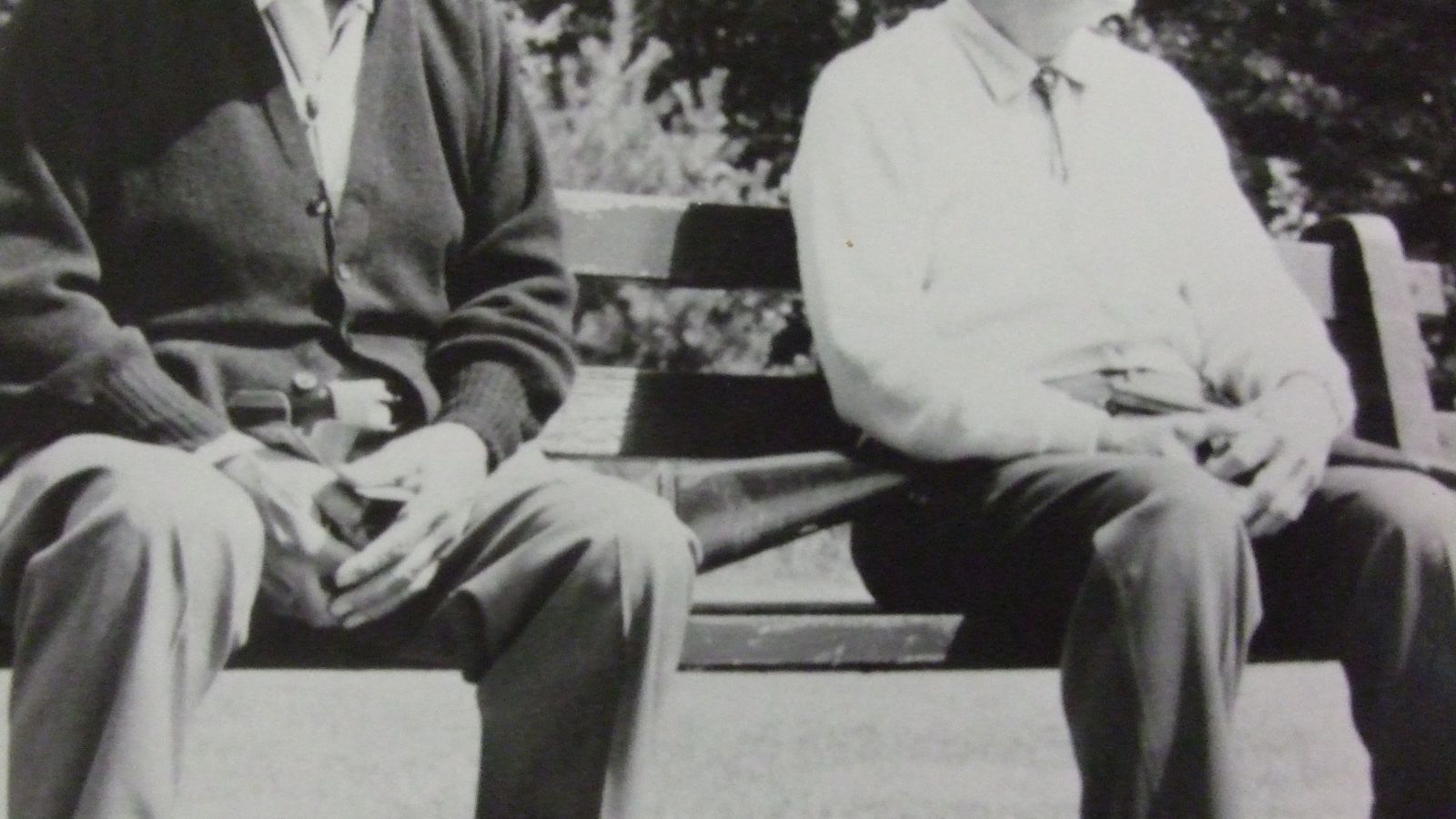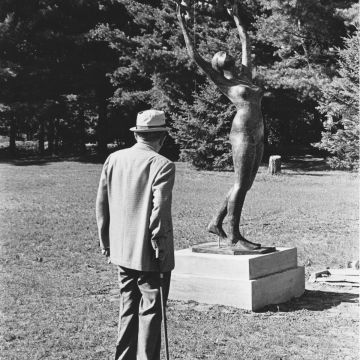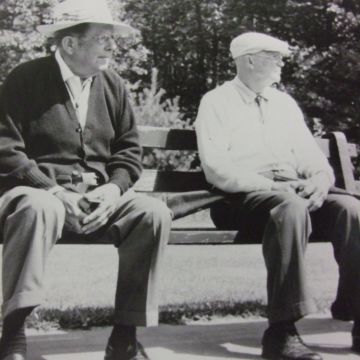
Howard Young's Legacy
Howard Young's Love for the Lakeland area.
It wasn't until the will of S. Howard Young was made public on Aug. 15, 1972, that residents of the Lakeland area began to understand how deeply this man loved the Northwoods of Wisconsin and the people who reside within its boundaries.
On that day in 1972 they learned that Howard Young had bequeathed approximately $20 Million dollars for a health center so that the area would have the finest facilities and continue to attract outstanding doctors of the caliber that had joined the staff of the first hospital--Lakeland Memorial Hospital.
The will further stated that the "net income is to be paid in perpetuity to the hospital to be used for its own general purposes and that $7 Million dollars be used only for the purpose of constructing, equipping, furnishing and opening a new main hospital."
Indeed, Howard Young had a love affair with the Lakeland area that spanned some 65 years, and the impact of the love was reaffirmed on Saturday, June 18, 1977, with the dedication of the Howard Young Medical Center. It will continue to be reaffirmed, ad infinitum, through its operation.
Stephen Howard Young was born in Belle Center, Ohio, on May 22, 1878, the eldest of five children who would eventually comprise the family of Philip and Mary Funk Young. His father was a highway construction supervisor.
It seemed as if Howard Young was born with great ambition. His mother soon realized that his ambitions far surpassed anything that Belle Center had to offer, and so it was with her blessing that he left his home at age 10 to make his way in the world.
His business career began simply, delivering for both a laundry and a paper route. When he was 15 years of age he turned to chromolithography (the process of lithographing in colors), a relatively new innovation in 1893. His first operation was in Anderson, Ind., and as his business flourished he opened offices in Cincinnati and Lima, Ohio, plus Peoria, Ill.
By 1896, at the age of 18, Howard Young had amassed a fortune of $400,000. This was also the year of the panic and he lost it all.
He began again...
By now he had decided his future lay in oil paintings. He contracted for the services of several prominent portrait artists in the area. Then, following an obituary notice, he would contact the family and sell them oil paintings from the snapshots they provided of the deceased. They sold at $2,000 each.
One of his clients then asked him to select and buy paintings for her home, paying a commission of $300 for each one. This moved Howard Young into a career as an art dealer.
In 1900, Young married Mabel Rosemund of Springfield, Ill., and moved to St. Louis where he established his headquarters. His wife preceded him in death in 1955. There were no children of the marriage.
His business continued to flourish. Then one day he learned of a man in Bartlesville, Okla., who was looking for a Remington to purchase.
Young had one and he was immediately off to Oklahoma. While there he played poker with Harry Sinclair, Frank Phillips and Bill Skelly, and a new chapter in his career opened--investments. It opened with investments in oil.
In St. Louis, Young became friendly with the Busch and Lambert families. He bought shares of Anheuser-Busch stock that he never sold. He was a wise investor and unloaded a great deal of stock just before the crash in 1929. His one regret was that he sold his IBM stock too soon, for although he made a fine profit, it was nothing compared to what it would have been if he had held it.
He was as wise in his art dealings as he was investing. His greatest achievement was his discovery of the "Lost El Greco"--"Christ Healing The Blind." This painting now hangs in the Metropolitan Art Museum.
In his art dealings, Young had one regret. He bought a Van Gogh for $5,000, sold it for $10,000, and shortly before his death it sold for $850,000.
In 1907, Howard Young developed a nervous ailment. His doctors recommended a summer vacation in the Northwoods of Wisconsin, and thus began his love affair with Lakeland area.
Howard Young was an art dealer for 75 years. His only partner was his nephew, Francis Taylor--Elizabeth Taylor's father, who died in 1968.
He did have a multitude of friends and he considered Dwight D. Eisenhower one of his closest. He played an instrumental part in Eisenhower's entering the 1952 presidential race. He arranged a reception for Eisenhowers with Scripps Howard newspaper executives and it was at this reception that Ike obtained their support. Without this, he probably never would have entered politics.
Howard Young revealed a little of his true feelings for the Lakeland area when, on election night, after learning of his victory, Eisenhower turned to him and asked him where he would like to be ambassador. Young's reply--"in Minocqua, Woodruff and Boulder Junction."
In later years, after Eisenhower had suffered his heart attack. Young built a special track down the hill from his home to the lake. Its car carried Eisenhower for his daily swims that he loved so well. Without it, Ike could not have negotiated the steep hill.
During their years of friendship, Eisenhower presented Howard Young with three of his signed paintings. These, along with their correspondence, were donated to the Eisenhower Museum in Abilene, Kansas.
Young was an avid sportsman. He loved golf and he was an excellent skeet shooter; but hunting and fishing were probably his favorite spots. He kept homes in Florida and Connecticut, but Minocqua was his favorite retreat, for here he could indulge in all his favorite sports.
Howard Young died at the age of 94 on June 23, 1972. He died among his favorite art treasures in his galleries in the Hotel Pierre in New York City. His remains lie in Detroit...but his heart and memories are alive in the Lakeland area.


